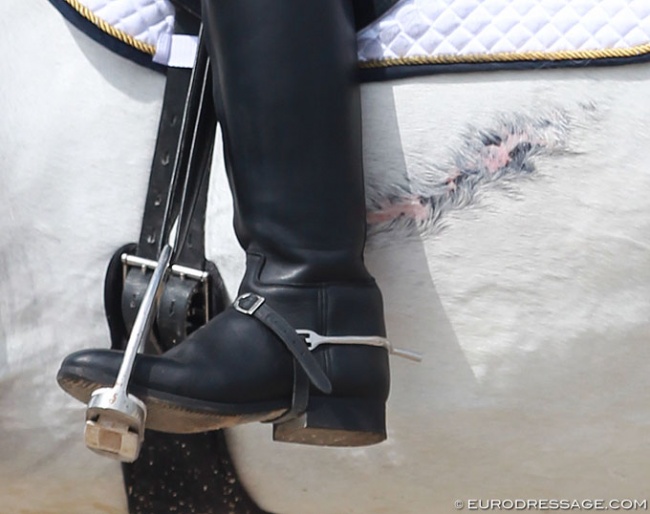
There are many reasons why a horse may become as what is called "behind the leg" or "dead to the leg." Riders should be aware of the (permanent) skin damage wrong use of leg aids/spurs can cause.
Behind the Leg, Dead to the Leg
Often the reason behind this phenomena is an issue with balance or misunderstanding in the communication with the horse, possibly caused by tension or unclear aids. When the horse feels a bit slow to the leg, there is a trap – riders tend to try to push the horse forward with their seat or they try to keep holding, squeezing or tapping with their legs. This is problematic because overuse of the leg may also cause a kind of braking effect for the horse. If the leg is held on in a squeezing way, it means the rider's hip can´t be flexible. This is then restricting the movement of the whole horse as the rider is holding against it with the seat and that way suggests the horse to slow down or the horse gets tense and drops the back. Short: The leg is asking the horse to ”go”, but at the same time the rider asks the horse to not go.
If the rider keeps this habit of digging with the leg, the horse will not listen after a while since the body wants to ignore the disturbance that it cannot get rid of.
But the fact that a horse becomes "dead to the leg" doesn´t mean that the horse wouldn´t really feel the leg, because the skin and the structures under it are very sensitive layers with highly sensitive innervation.
Effect on the Skin
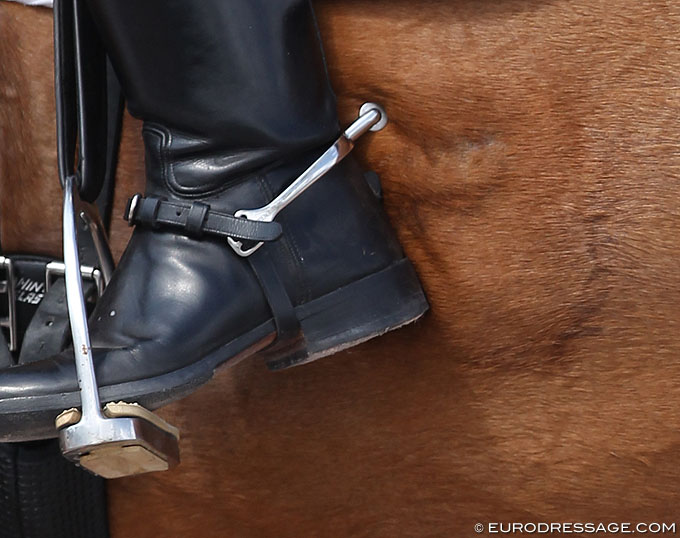
Even the function of symphatetic and parasymphatetic nervous systems have an effect on the physiological changes in the structures. The horse should be able to move without continuous discomfort and in a good state of mind, which of course should be a corner stone in any sustainable training method.
We have all seen how a horse reacts to a fly – it shakes it away with m.cutaneus which is located below the skin on the lower neck, shoulder and trunk area, pouched inside superficial fascial layers. You can easily test the location of the muscle by touching the horse's skin very lightly with your fingertip. As the horse can feel this, he can feel the rider’s light aids and react to them easily if training is done correctly and there is no pain or other reasons like tense, conflicted communication that cause the horse to not notice smaller aids.
Spur Edemas from Over use
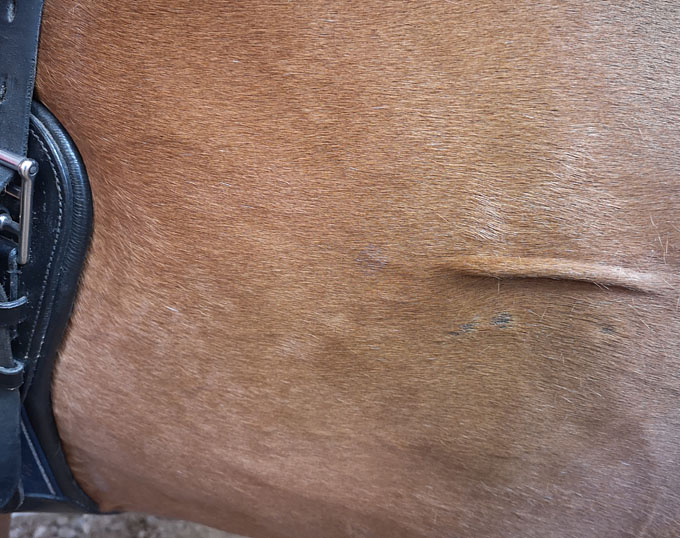
remains uplifted until the skin was stroked back
towards the ribs.
Fascia reacts on any stress and the problems start to cumulate as time and rubbing goes on. Rubbing the tissue can make it modify over time, and this also means it may get either thicker or weaker and more easily damaged as the natural elastic qualities of the tissue and fascial structures are damaged, often even permanently.
If spurs are used in a way that causes visible damage, like a wound, the tissue needs to heal which means there will be scar tissue. Even attachments can be formed and sometimes there are small or larger painful areas in the superficial or deeper fascial layers that cause symptoms in specific movements, directions or postures. The sensation on the damaged area may also alter – it may even become more sensitive for pain or it may reflect discomfort further away in the body, even quite far away from the original source.
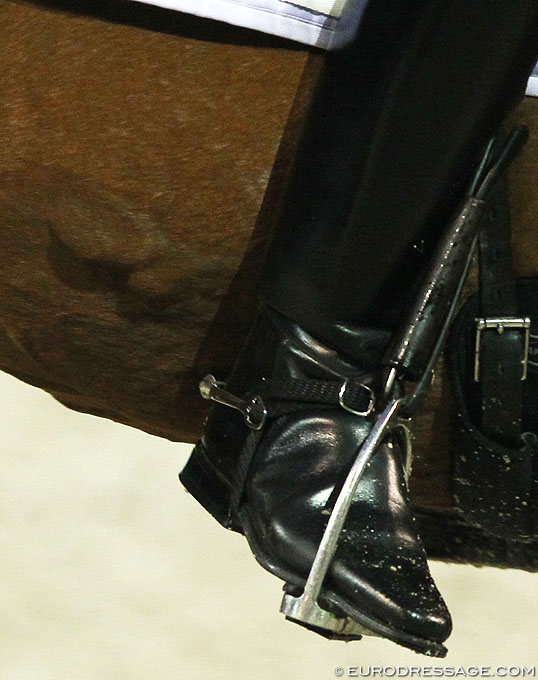
When it comes to spur marks, there may sometimes be a clear crater like formation, the edges of the area may be hard and sore (or totally non reactive) and in the middle there is a thin, swollen or a dry area, possibly with scar tissue.
In extreme cases the skin will not recover normally when pinched, which suggests the tissue has been damaged for a longer period of time and the different fascial structures are locally dry or disturbed even if the horse is otherwise well hydrated.
Avoiding More Damage
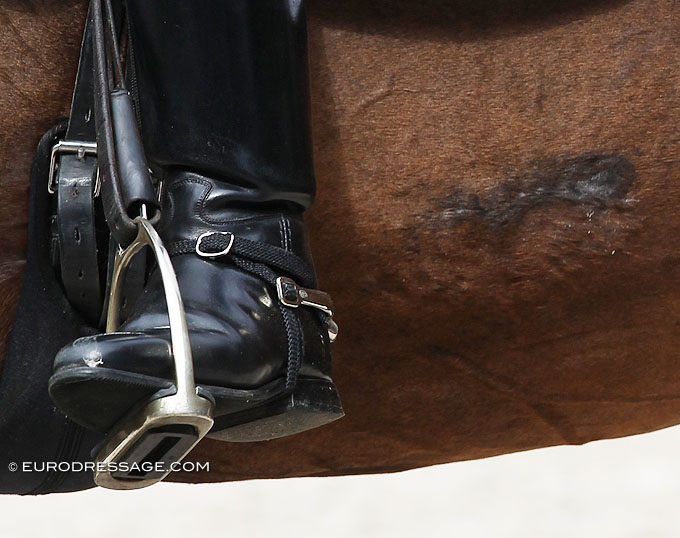
If the horse has clear spur marks, the situation needs to be calmed down for a while to not keep the problem going on. The spur itself is not a problem (when used as a precision tool), but the way aids are used needs to be discussed and there may be a need to reset the way the horse reacts to the leg. The aids need to be as light as possible and clear enough that there is a response and the horse needs to understand the aids. The rider himself has to relax as soon as the response is there and to let the movement flow with good positive energy.
Text by Niina Kirjorinne - Photos © Astrid Appels - Niina Kirjorinne
Coming soon: "Getting back in front of the leg by resetting the leg aids"
Related Links
Functionality in Equitation: The Forward Thinking Hand
Functionality in Equitation: Balance, the Key in Equitation
Functionality in Equitation: Aim for Good Movement
Functionality in Equitation: Fascia and Movement
Functionality in Equitation: Fascia Treament - Surface Has a Deep Effect
Meet Niina Kirjorinne, Classical Dressage Rider and Physiotherapist
Effect of Noseband Positioning to Fascial and Neural Dynamics of the Head